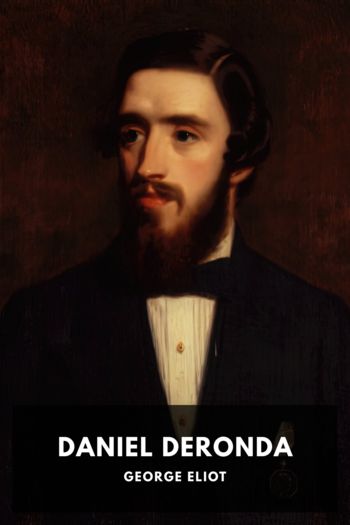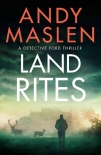Rites of Spring, Anders Motte [reading diary .TXT] 📗

- Author: Anders Motte
Book online «Rites of Spring, Anders Motte [reading diary .TXT] 📗». Author Anders Motte
The glade is surrounded by gnarled old trees of a completely different type from the rest of the forest. Each one consists of several slender trunks leaning outwards in different directions until they form the crown. In the dim morning light it looks as if these trunks are actually tall human beings whose feet have become part of the trees’ roots, their hands part of the crown. The veils of mist slowly swirling over the wet grass add to the sense of unreality.
There is a pole beside Thea which reminds her of the one next to the Gallows Oak. The information board is lying on the ground, overgrown with grass. With a little effort she manages to lift it. The first part of the text is barely legible, but she manages to work out that the strange, humanoid trees are hawthorn. She remembers what Dr Andersson told her the other day – that Tornaby got its name from the hawthorn, once regarded as a sacred tree.
The rest of the text is easier to read.
The stone circle probably dates from the sixth century, marking a grave or possibly a meeting place of some kind. At this time the castle forest was an island, surrounded by extensive marshlands, which made it suitable for religious ceremonies.
The central stone is older than the rest. On the top there is a small bowl-shaped hollow, common during the Bronze Age. It was probably used during fertility rites, when grains of corn or small figures made of twigs were ‘sacrificed’ in the hollow to ensure a good harvest. The custom lived on in the area until the mid-nineteenth century. The stone is still referred to locally as the sacrificial stone.
The smooth surface of the stone is dark with dampness. The hollow is about ten centimetres wide and maybe half as deep. The dew has formed a small puddle in the bottom.
Thea takes out the Polaroid. Steps back. The background in the photograph looks slightly different. The trees aren’t so tall or overgrown. The stone, however, is exactly the same. She moves around until she finds the precise angle from which the photograph was taken. She half-closes her eyes, pictures Elita standing on the stone, David and his three friends on either side of her. The spring sacrifice and her four attendants. Five people in total.
But there must have been a sixth person present – the photographer. Unless the camera had some kind of automatic timer, of course.
She looks closely at the picture, trying to see if there’s a shadow from the person behind the camera, but the image is too pale, the colours faded.
A sound interrupts her train of thought, another branch snapping, but this time she can tell where it’s come from. Among the trees, more or less opposite the point where she emerged into the glade. She is just about to call Emee when she hears more noises, branches scraping against clothing, a faint metallic click.
She sees a movement among the hawthorns and realises she’s holding her breath. A dark silhouette appears through the mist. A man pushing a bicycle. He is on his way into the glade, eyes fixed on the sacrificial stone. He doesn’t seem to have noticed her, not until he’s almost there. He stops dead, drops the bicycle. The colour drains from his face, his eyelids flicker, and for a second she thinks he’s going to faint.
‘Hi, Bertil,’ she says. ‘What are you doing here?’
29
Walpurgis Night 1986
I’m sure you’ve heard about the other girls who died in the forest. Isabelle who drowned in the moat, and Eleonor who fell off her horse and broke her neck.
Soon it will be Elita’s turn.
Beautiful women dead that by my side. Once lay.
Isn’t that lovely?
There’s something appealing about dying when you’re at your most beautiful, don’t you think?
The young man loved to ride. Loved the feeling of controlling something so big and strong, yet as sensitive as a horse. He himself was short and had been born with a cleft palate, which still gave him problems with his speech. He had to make an effort to master certain letters, just as he had to make an effort to control his involuntary twitching. But on horseback none of that could be seen. Up here he raced along. Agile, complete.
He loved to ride, and he loved the land: the meadows, the pastures, the forest, the marsh. It all belonged to him, as far as the eye could see. Or it would belong to him. Soon.
His father was getting old now. He was a hard man, a man who never talked about his love for the land, but about crops, yield and tenancies. Practical matters. Things that could be counted and measured.
His father feared no one, apart from God. The only time his expression softened somewhat was when they prayed together in the chapel. Prayed for the young man’s mother. For her immortal soul. Asked God to forgive her weakness.
Sometimes the young man could feel his father’s eyes on him. Studying him closely, as if he were searching for something in his face or movements. A feature, a gesture of some kind. But every time his father seemed disappointed.
Over the years the young man had realised why. It was because he was his mother’s son. Because he was different.
*
Elita was waiting by the Gallows Oak, just as she’d promised. He galloped up to her, made the muscular stallion stop right by her feet, thanks to a combination of perfectly executed movements with the reins and his legs. Elita’s expression didn’t change. She was just as good a rider as he was – maybe even better, which was one of the reasons why he loved her.
As always he was struck by how lovely she was – the coal-black hair, those eyes, the olive skin.
‘I’ve got





Comments (0)